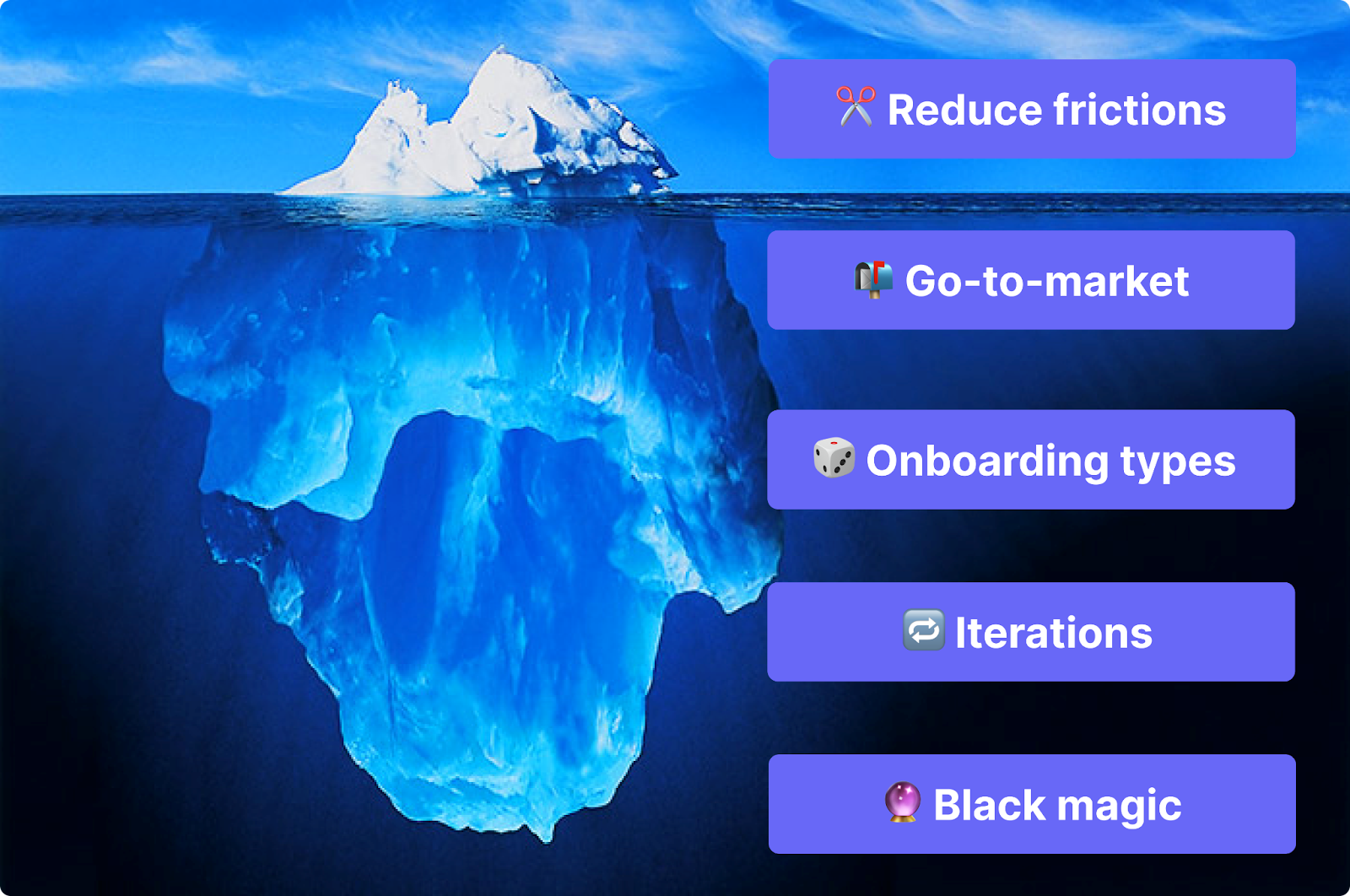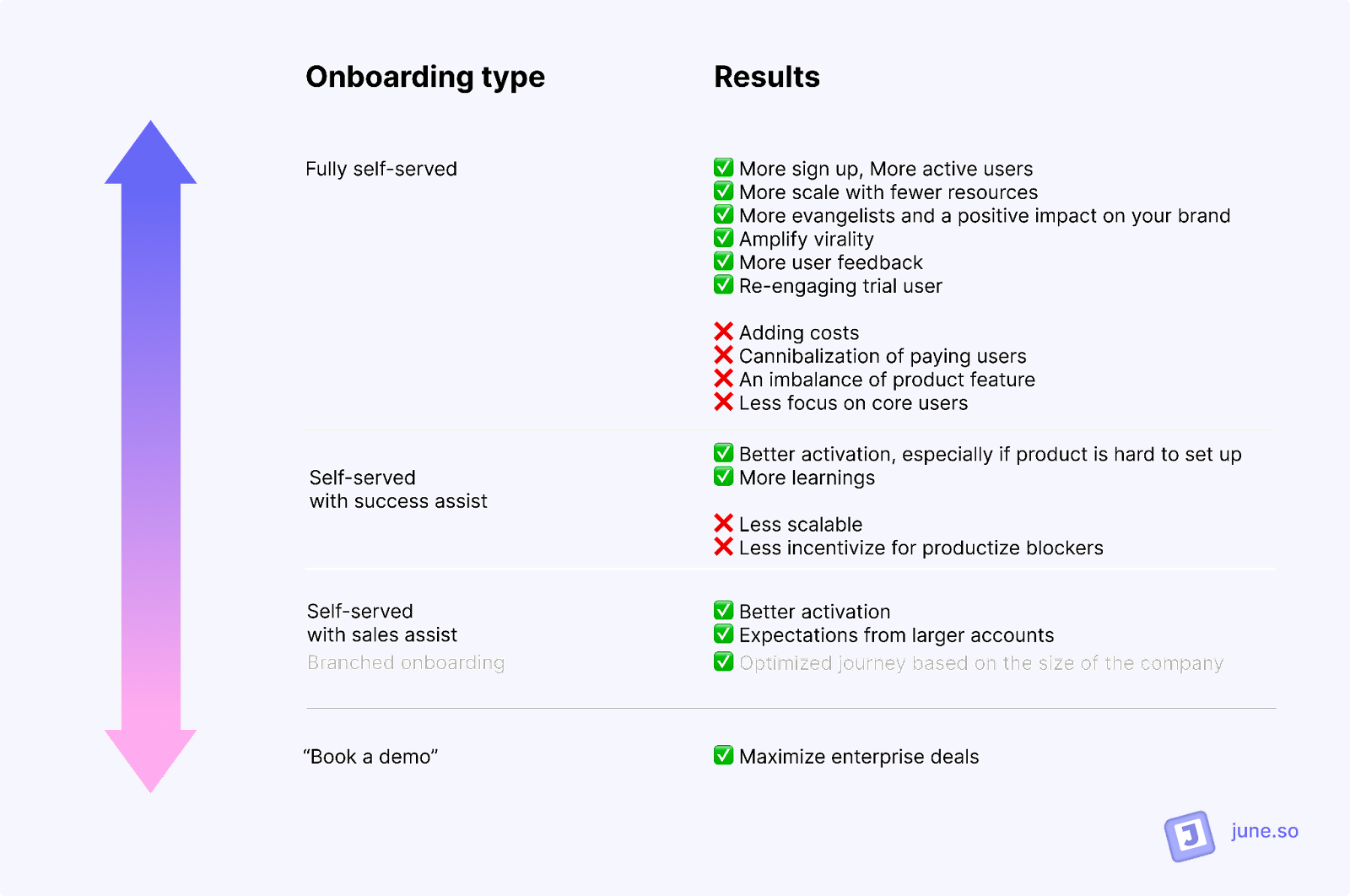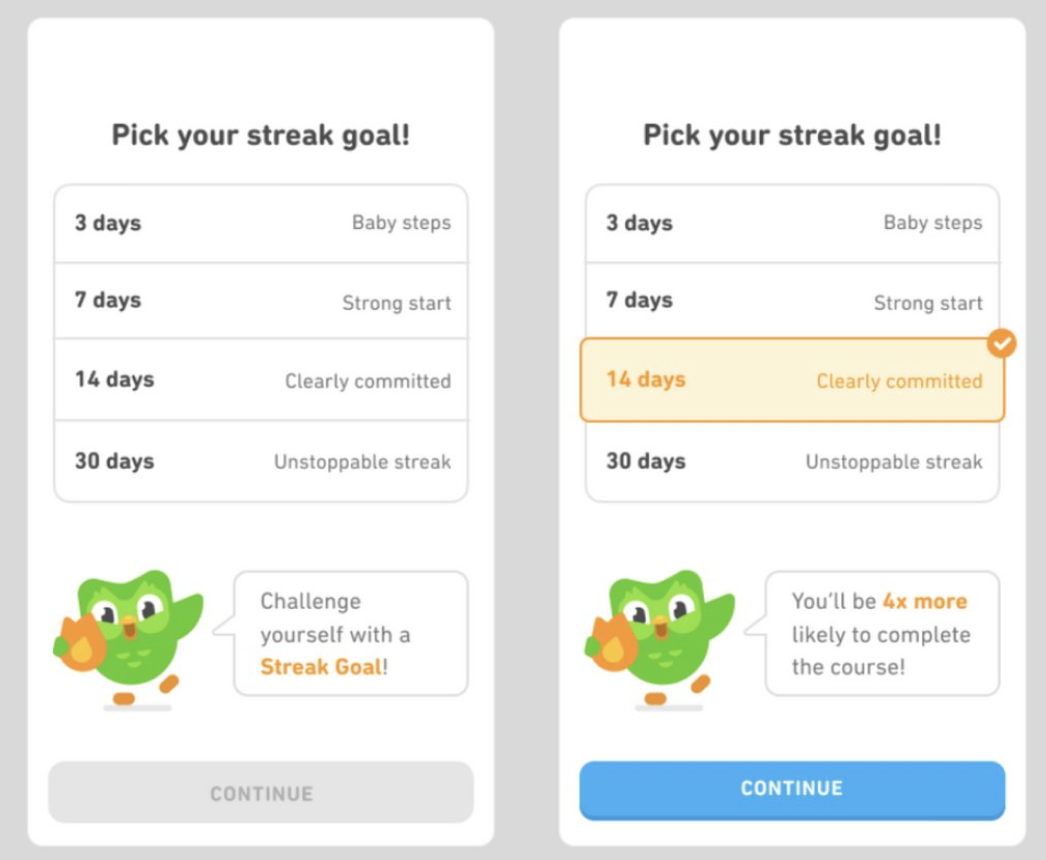The onboarding iceberg

.png)

.png)
I started my career in product management 8 years ago. My first team mission was to rebuild our app onboarding flow from the ground up.
I got obsessed with this topic and spent 12 months making onboarding flow smoother. The goal was clear: get more people, faster, to our value proposition.
I documented these learnings in slide decks and presented them at meetups. I sometimes reference this work during roadmap exercises (you can find some of this work here, or here).
Two years ago, I left my job at Intercom and decided to start my startup. This is when I realized that I had only seen the tipping point of the iceberg.
I assumed building great onboarding was all about reducing friction—but it's really not.

It actually starts with picking the right onboarding for your business—then, evolving based on iterations and learnings.
Let me walk you through the framework I use to decide what kind of onboarding you should pick for your business.
The best way to know which onboarding flow to pick is to start from your go-to-market motion.
In the past couple of years, 4 main go-to-market motions have emerged:

None of these go-to-market strategies are perfect.
Picking the right one depends on many things—for instance, the maturity of your market. If your market is new then supporting people with customer success may be needed. Customer location is another consideration—a construction worker isn't going to be online all day long, making a phone call a better way to reach him.
Any go-to-market strategy comes with trade-offs. But make sure you pick one.
The go-to-market strategy you pick will guide the type of onboarding you should build.
In the illustration below, I listed the pros and cons of the various types of onboarding out there.

Feel free to pick your poison, but don’t worry—you’ll be able to iterate on it. It’s along and iterative journey.
I’ll show you ours in a second.
In case you want your product to be full product-led, make sure to check out feasibility beforehand. You don't want to take that direction at a loss.
Here are 3 critical health checks:
If the answer to these 3 questions is "yes," then you’re good to go with this types of onboarding.\
No onboarding ever built was perfect from day one. No matter which onboarding path you take, be aware that iterating is necessary.
To illustrate this point, I figured I'd use an example from my own experience building onboarding at June.
Here are the various onboarding iterations we went through, as well as our learnings each time.
Our team has learned a lot from each of these iterations. So will you when you do the same.
On paper, each type of onboarding has different advantages. you’ll need to test to find out what works best for you.
Ok, now that we've seen the basics of picking the right onboarding for your business, here's one last thing. I call it black magic.
It's truly the little things that can significantly change your onboarding success.
These things are counter intuitive, happening only from time to time. But the more you know they exist, the more likely you are to find one of them.
Here's a famous example: Sometimes, adding friction to your onboarding can be good for your business.
This is what Duolingo recently discovered with their own onboarding flow. The language learning app decided to ask users to select their streak goal instead of pre-selecting it for them. Even though the trick didn’t really do anything in the product, the Duolingo team noticed that:
It looked like this:

Why did it work? Simple: because users were now committing to their learning and keeping themselves accountable.
Another famous example: Superhuman's onboarding call boosted their user activation rate.

If you’re building an onboarding strategy for your business, don’t bite on just simplifying it and cutting out steps. Instead, take a step back and think about your larger go-to-market strategy. Then, pick the matching onboarding type.
If everyone's telling you to be fully product-led, fine. But consider first that PLG isn't a monolith—many companies use hybrid product-led and sales-led motions to great success. So always double check if this is feasible for you.
Lastly: Iterate, iterate, iterate, and make some bets.
You never know what kind of black magic you’ll find!